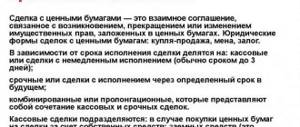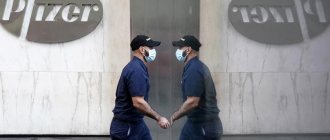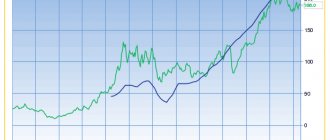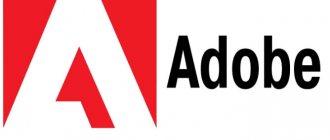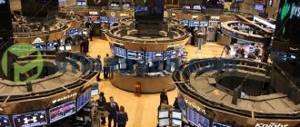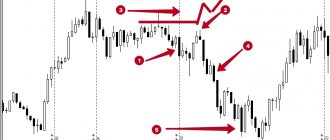NVIDIA bought ARM Holdings
The world's largest manufacturer of video cards announced in September 2021 that it was acquiring the developer of ARM processors . The processors of the vast majority of smart devices are built on the ARM architecture: from the iPhone to vacuum cleaners. And ARM Holdings, accordingly, receives royalties for all this. As a result, NVIDIA has seriously strengthened its position among technology companies. The deal itself has not yet been completed, although the parties have already agreed on everything. Registration, according to NVIDIA estimates, will take about 18 months.
HP → Compaq (2001), $33.6 billion
Transaction values are recalculated at 2015 exchange rates.
This deal was met with great skepticism from experts and investors. Many, including the founding families, called the Compaq purchase a costly mistake and tried to prevent it from being completed.
Carly Fiorina, then the director of Hewlett-Packard, long defended her views on the takeover. She believed that the deal with Compaq would allow HP to become the largest computer manufacturer in the world and reduce the cost of production, eliminating many of the problems.
At that time, the PC directions of both companies were already feverish. But HP's successful printer business allowed it to maintain its position after the merger. HP still occupies a large market share, but the company's expansion has led to negative consequences. Since 2001, the personal computer market has changed a lot.
Formerly one of the best IT companies, HP is gradually slowing down and risks becoming a relic. Sluggishness, internal conflicts, cuts in research and layoffs of specialists open the way for competitors. To correct the situation, the company decided that it needed to change from within. HP has placed its bets on software and enterprise services.
AMD teams up with Xilinx
Another major deal in the high technology sector. At the end of October, processor manufacturer AMD, the main competitor of Intel , which has recently gradually turned from catching up to leading, announced the acquisition of Xilinx, the largest American manufacturer of programmable logic integrated circuits. The transaction value was $35 billion, and the total capitalization of the combined corporation now reaches $135 billion. After the completion of the transaction (already in 2021), the corporation will be headed by AMD CEO Lisa Su.
Cross-border mergers and acquisitions: security and synergy
Today, companies are forced to operate in difficult global economic conditions. There are economic downturns and crises, complicated political conditions, which increases the risk of bankruptcy of many companies. They have to adapt their activities to changing operating conditions and change economic relationships with partners. In this regard, many organizations resort to mergers and acquisitions (M&A) as transactions that ensure the security of the company. In modern conditions, such transactions are one of the ways of survival for some companies and development for others. This method is becoming more and more widespread; many companies, including the most successful ones, are resorting to it. M&A transactions can be carried out between companies both within the same country (national) and in different countries (transnational, cross-border). Compared to national transactions, cross-border M&A transactions are more complex, have certain characteristics and occupy an important place in the global economy, as they affect the global market as a whole.
Before examining the features and trends in the development of cross-border transactions, it is worth understanding what mergers and acquisitions are. According to Sharpe W.F., mergers are “a form of corporate takeover in which two firms combine their operations and become one company” [8, p. 983] (Sharp, Aleksander, Beyli, 2014)
.
Typically, the decision to merge is made by the managers of the merging companies after negotiations. In such a transaction, one of the companies ceases to exist, but the acquiring company assumes the assets and liabilities of the acquired company. “A takeover means the acquisition of a controlling stake in a company by an individual or legal entity” [8, p. 995] (Sharp, Aleksander, Beyli, 2014)
. The merger of two or more companies is carried out to consolidate financial, technological, production and other resources. This form of merger is considered to be hostile, since a forced merger is carried out through the acquisition by one company of another (others), which (are) liquidated as a result of the transaction. The implementation of M&A transactions makes it possible to increase the competitiveness of the structure obtained as a result of the merger and obtain additional profit for it.
As noted earlier, mergers and acquisitions play an important role in the modern world. This is largely due to the fact that their growth significantly increases the flow of foreign direct investment into the global economy. The growth dynamics of M&A transactions are presented in Table 1
.
Table 1
Growth in the number of transnational companies over the years
| Year | Number of transnational corporations in the world (TNCs) |
| 1939 | About 30 |
| 1970 | 7,000 |
| 1976 | 11,000 (86,000 branches) |
| 2004 | 64,000 |
| 2015 | 82,000 (810,000 branches) |
Source:
[9;
6, p. 432] (Popova, Grivanov, 2015)
.
The USA is the main merger market in the world (18% of TNCs), followed by the UK (15% of TNCs), France (15% of TNCs), Germany (13% of TNCs) and Japan (9% of TNCs).
The remaining 30% of the total number of TNCs are in the remaining countries [2]. Experts note that the greatest dynamics of growth in merger operations is taking place in North America and the Asia-Pacific region. However, some developing and transition countries are also expected to see strong foreign activity in the near future. It is believed that M&A transactions will be observed in countries such as China, India, Brazil, Mexico, South Africa, Indonesia, Malaysia, Russia, Romania, Kazakhstan, etc. See also:
Structural deformations and metrics of the Russian market of mergers and acquisitions of companies
(
Musatova M.M.
) // Economics, entrepreneurship and law. No. 12 / 2020
Development of entrepreneurship in border areas and sharing of cross-border resources
(
Tyurina Yu.G., Troyanskaya M.A.
) // Economics, entrepreneurship and law. No. 4 / 2019
Analyzing the latest trends in mergers and acquisitions, one can see that Russia's largest companies, especially in the oil and gas industry, are increasingly interested in promoting their foreign business. For example, in recent years it has carried out several investment projects through mergers and acquisitions in the German energy sector. This is due to the fact that the German market is of particular interest to the country, since all the main trans-European gas transport flows pass through Germany: from Norway, Russia, and Holland.
Speaking about the key factors that directly contribute to M&A transactions at the present stage, we can highlight:
1. Liberalization of trade regimes and foreign direct investment, where fair treatment is provided to foreign investors, and various barriers to foreign trade are eliminated in accordance with world practice.
2. Economic integration at the level of regions and states, that is, economic interaction between countries, which leads to the convergence of economic mechanisms, taking the form of interstate agreements and coordinatedly regulated by interstate bodies [5, p. 825] (Leshchenko, 2019)
.
3. The trend towards deregulation of the economy, in which the scale of government intervention in the economy is reduced, and government regulations are weakened [13, p. 2051] (Isaeva, Leshchenko, 2019)
.
4. Reduced transportation and communication costs, which contribute to the expansion of companies' markets, and new information technologies allow companies to manage internationalized production circuits at a distance.
5. High rates of economic growth in developing countries.
Taking into account the identified factors, companies can effectively prioritize when implementing cross-border mergers and acquisitions, as well as develop and apply anti-crisis measures to implement highly effective management decisions and increase their competitiveness.
In 2021, more than 13.5 thousand cross-border mergers and acquisitions worth more than $1.5 trillion were announced (Figure 1)
.
Picture 1.
Number and value of cross-border mergers and acquisitions
Source:
[15].
Analyzing the dynamics of cross-border M&A deals, it can be seen that in 2000 and 2007 the average deal rates reached their highest levels - this was also a boom in foreign direct investment, preceding two major recessions in 2001 and 2008. Picture 1
illustrates well one of the key features of the boom and bust cycles of foreign direct investment over the past few decades: the increase in foreign direct investment flows is partly due to the impact of financial bubbles (excessive increases in the value of an asset) on the valuation of cross-border M&A activity.
Along with the growing number of cross-border M&A transactions in the modern world, an increase in the cost of these transactions is also beginning to be observed. Such transactions primarily include mega-deals, the value of which is more than $1 billion. The rapid growth, as well as the increase in the value of the largest cross-border M&A transactions, can be explained by two reasons. Firstly, the largest international companies carrying out such transactions have enormous financial resources, and secondly, mega-deals are financed and organized by the largest institutional investors, which include various categories of banks, as well as various types of investment funds: pensions, trusts, etc. .d. It is impossible not to mention the fact that often institutional investors themselves act as participants in M&A transactions. It is thanks to the relatively high activity of these institutions in different periods that large cross-border transactions are possible in certain years.
The increase in the number of cross-border transactions is directly related to the progressive globalization of the world economy, the acceleration of scientific and technological progress (STP) and ensuring the safety of doing business. Globalization also explains the constant increase in mergers in the banking industry.
When considering cross-border mergers and acquisitions, one cannot fail to take into account their features, which must be taken into account when concluding agreements on transactions. These include:
— higher risks associated with differences in organizational culture, legislation, and the interaction of many different institutions of companies in the countries participating in the transactions;
— availability of reliable information when choosing a partner company;
— difficulty of access to corporate information of foreign companies [5, p. 311] (Leshchenko, 2019)
;
— existing contradictions between the legislation of individual states and international law [14, p. 22] (Leshchenko, Bolonina, 2019)
;
- dominance in mergers and acquisitions in the world of services and manufacturing industries, while the share of the mining industry is insignificant, etc.
Let's look at the above features using the example of two major cross-border mergers and acquisitions in 2021.
Let's start with the largest deal in the global agricultural industry. The German chemical concern Bayer bought the American agrochemical corporation Monsanto. As a result of the transaction:
— the brands that belong to the corporation and under which it sells its products will remain, but will move into the Bayer portfolio;
- Monsanto shares cease to be listed on the New York Stock Exchange;
— Bayer is the sole owner of Monsanto at the moment;
- Monsanto shareholders received $128 for each share [7, p. 99] (Chernukhina, Ermolovskaya, 2019)
.
The takeover process lasted about 2 years and resulted in the creation of the largest producer of genetically modified seeds, pesticides and herbicides in the world. The final value of the deal was $63.5 billion. About this largest merger deal in the history of the agribusiness industry, Bayer Chairman of the Board of Directors Werner Baumann said the following: “This is a great day: for customers - farmers around the world, with our help, we will be able to grow and preserve their crops even better; for shareholders – this transaction creates significant added value; for consumers and the global community - because we will try to provide even more healthy, affordable and renewable products" [10].
See also:
Modern instruments for financing cross-border investment projects as a source of long-term economic development
(
Morkovkin D.E., Stroev P.V. and others
) // Economic relations. No. 4 / 2020
Geopolitical aspects of electric power development: organizational and strategic approach
(
Salygin V.I., Mustafinov R.K.
) // Economic relations. No. 1 / 2019
The agreement to merge Bayer and Monsanto was announced in September 2021, but, as noted earlier, its implementation was delayed for almost two years. This was due to the fact that this transaction had to be approved by almost 30 antitrust authorities of the countries and certain conditions had to be fulfilled by Bayer. For example, in exchange for approving the deal, the Russian Federal Antimonopoly Service demanded the transfer of technologies in the field of seed selection and individual germplasms, and the provision of digital farming technologies. Also, under an agreement with the US Department of Justice, Bayer had to transfer a number of assets with a total value of about $9 billion to BASF. This was the condition under which the US Department of Justice was ready to approve the deal. In favor of BASF, Bayer sold at a base cost of €7.6 billion and its other assets with a turnover of €2.2 billion (at the end of 2021) under an agreement with other antimonopoly services.
Bayer's acquisition of Monsanto is an important milestone for him and a new qualitative breakthrough in business. Monsanto merged with Bayer's agricultural division, CropScience. As previously estimated, this should lead to an increase in the turnover of this division to €20 billion, which in terms of revenue will almost equalize this area with Bayer's pharmaceutical business. In addition, this merger will give the company new goals and new management.
Another example of a major M&A deal in 2021 was the purchase by US telecommunications conglomerate Comcast of Europe's largest telecommunications company Sky, which provides subscriptions to paid channels. Comcast includes such well-known media companies as NBSUniversal and animation studio DreamWorks. It is worth noting that Comcast won the purchase of Sky in a closed auction, beating its main competitor in the bidding - 21st CenturyFox and offering £17.28 against £15.67 per share of the company. Ultimately, the transaction amounted to $38 billion [3, p. 76] (Ermolovskaya, 2018)
.
However, the deal was not completed immediately as approval was required from Sky's board of directors and auctioneers. On October 10, 2021, the deal was finally closed: Comcast acquired a 39% stake in the telecommunications company Sky, thereby obtaining a controlling stake in the company, owning a 76.8% stake in Sky [4, p. 209] (Ermolovskaya, 2019)
. It is noted that Sky's editorial independence will be maintained.
The question may arise: why does an American conglomerate need to acquire a European company and, as a result, enter the European market? To answer this question, it is worth noting that Sky is the leading pay television operator in countries such as Austria, the UK, Germany, Ireland and Italy, with a total audience of about 23 million subscriptions [1]. Therefore, by acquiring this European company, Comcast plans to:
— will become less dependent on the American market;
— will become the owner of 52 million subscribers;
— will increase the share of revenue from markets outside the United States from 9% (2017) to 20%, since in Europe the share of pay television is constantly increasing and currently amounts to about 30% [11];
— will become the world leader in pay television.
Also interesting is the experience of the American media corporation Liberty Media Corporation, which announced a two-stage takeover of Formula 1 (Fig. 2)
.
Figure 2.
Stages of Liberty Media Corporation's takeover of the Formula 1 business
Liberty Media Corporation completed the acquisition through a subsidiary, Liberty Media Group, which was renamed Liberty Formula One Group upon completion of the transaction. As a result of the first stage, Liberty Media acquired an 18.7% stake in Delta Topco, the parent company, from a consortium of investors led by private equity fund CVC Capital Partners for $746 million.
See also:
Experience of spatial and territorial development of the European continent in the context of project planning and management
(
Abdullaev D.M.
) // Economic relations. No. 3 / 2015
Prospects for the development of telemedicine in the context of digitalization of the Russian economy
(
Gorodnova N.V., Klevtsov V.V. and others
) // Issues of innovative economics. No. 3 / 2019
The second phase was completed on January 23, 2021, following regulatory and Liberty shareholder approval. As a result of the second stage, another $354 million was paid in cash and $3.3 billion in the form of targeted shares in the newly created division of the American corporation - Liberty Formula One Group. As a result of the deal, Liberty gained control of Formula One Group and a 35% stake, with the remaining 65% going to CVC Capital Partners and other owners of the racing series.
In carrying out the transaction, Liberty Media Corporation was guided by the following motives:
— creating sustainable long-term value for shareholders;
— the opportunity to acquire a sports entertainment business with an attractive financial profile and an iconic global brand;
— the opportunity to use Liberty Media’s experience to expand the Formula 1 business;
— potential for attracting a wider range of commercial partners and sponsors to Formula 1;
— an opportunity for Liberty Media to interact with participating teams and the FIA to realize the potential of the racing championship;
— the belief that integration can be carried out quickly and efficiently with minimal interference in the work of employees;
— diversification of Liberty Media assets.
Of course, the main focus of the acquisition was to increase the value of share capital in the future. However, in order to assess the effectiveness of this transaction, it is first necessary to calculate the synergistic effect.
The value of the company (TEV - total enterprise value) is the value of all ordinary shares outstanding, calculated at the market price (MC - market capitalization) less cash and cash equivalents, plus the value of debt obligations (total debt), plus minority interests , plus the value of all preferred shares of the company.
Based on the fact that as of March 31, 2021, there were 337 million shares of Liberty Media Corporation outstanding, and the price per share was $39.8, we obtain market capitalization (MC) = 39.8 * 337 = $13,412 million. For the same On date, the amount of cash and cash equivalents amounted to $663 million, total debt was $7,118 million, the share of minority shareholders was $6,704 million, and the company does not have preferred shares. Hence, TEV= 13,412 (MS) – 663 + 7,118 + 6,704 = $26,828.6 million. Thus, the value of Liberty Media Corporation before the acquisition was $26,828.6 million. The cost for other dates is calculated in the same way. It should be noted that in the spring of 2021, Liberty Media recapitalized its shares with distribution across asset groups. The calculation of market capitalization is presented in Table 2.
table 2
Liberty Media Corporation Market Capitalization Calculation
| 31.03.2016 | 31.09.2016 | 31.03.2017 | 30.09.2017 | 31.03.2018 | |
| Share price,$ | |||||
| Liberty SiriusXM Group | — | 33,41 | 38,78 | 41,87 | 40,85 |
| Liberty Braves Group | — | 17,38 | 23,65 | 25,27 | 22,82 |
| Liberty Formula One Group | — | 28,14 | 34,15 | 38,09 | 31,9 |
| Liberty Media Corporation common stock | 39,8 | — | — | — | — |
| Shares outstanding, million | |||||
| Liberty SiriusXM Group | — | 337 | 339 | 340 | 340 |
| Liberty Braves Group | — | 55 | 59 | 59 | 60 |
| Liberty Formula One Group | — | 85 | 179 | 218 | 233 |
| Liberty Media Corporation common stock | 337 | — | — | — | — |
| Market capitalization (MC), $ million | 13 412,6 | 14 607,0 | 20 654,6 | 24 030,4 | 22 690,9 |
Source:
compiled by the authors.
To calculate the synergistic effect, it is necessary to calculate the value of the company (Table 3).
Table 3
Calculating the value of
Liberty Media Corporation
| 31.03.2016 | 31.09.2016 | 31.03.2017 | 30.09.2017 | 31.03.2018 | |
| Market capitalization ( MC) , $ million | 13 412,6 | 14 607,0 | 20 654,6 | 24 030,4 | 22 690,9 |
| — cash and cash equivalents, $ million | 562,0 | 940,0 | 1 071,0 | 783,0 | 1 042,0 |
| + total debt, $ million | 8 018,0 | 8 119,0 | 13 354,0 | 13 492,0 | 14 113,0 |
| + share of minority shareholders, $ million | 5 960,0 | 6 288,0 | 5 796,0 | 5 615,0 | 5 498,0 |
| Total company value ( TEV ), $ million | 26 828,6 | 28 074,0 | 38 733,6 | 42 354,4 | 41 259,9 |
Source:
compiled by the authors.
Since the transaction had already taken place, the actual pre-merger value of Liberty Media Corporation, which was $26,628.6 million, was used to estimate benefits. Thus, the benefits from the transaction were:
41,259.9 – (26,628.6 + 8,045) = $6,586.3 million
Consequently, the synergistic effect amounted to $6,586.3 million. The resulting value is above 0, which indicates that the acquisition is economically justified.
Also, to assess the effectiveness of the transaction, we present an analysis of the financial statements of Liberty Media Corporation before and after the transaction (Table 4)
.
Table 4
Liquidity indicators
Liberty Media Corporation before and after
the takeover of Formula 1
| Indicator name | Before takeover | After takeover | Industry average |
| Absolute liquidity Cash Ratio | 0,07 | 0,26 | 0,05 |
| Urgent liquidity Quick Ratio | 0,2 | 0,3 | 0,38 |
| Current liquidity Current Ratio | 0,24 | 0,44 | 1,3 |
Source:
compiled by the authors.
As can be seen from Table 4
, Liberty Media Corporation's liquidity ratios have increased since the acquisition. For the absolute liquidity indicator, a value of at least 0.2 is considered normal, for the quick liquidity indicator - at least 0.7, for the current liquidity indicator - from 1.5 to 2.5. Thus, liquidity indicators before the takeover were below normal, which indicates the organization’s inability to repay current obligations. After the takeover, the indicator values increased, however, the quick and current liquidity ratios still do not show normal values, which indicates a high financial risk.
Table 5
Liberty Media Corporation's profitability indicators before and after
the takeover of Formula 1, %
| Indicator name | Before takeover | After takeover | Industry average |
| Return on total assets ratio ROA | 2,2 | 2,5 | 3,19 |
| Return on equity ratio ROE | 1,3 | 9,4 | 9,77 |
| Return on invested capital ROIC | 0,6 | 9,4 | 4,24 |
Source:
compiled by the authors.
Among the profitability indicators, the greatest growth was demonstrated by return on equity and invested capital. The increase in return on equity from 1.3 to 9.4 indicates an increase in the company's operating efficiency. This ratio shows the profitability of the business for its shareholders. As for the return on invested capital, it increased over 2 years from 0.6 to 9.4. This ratio is an important indicator of the efficiency of using the organization’s material, labor and monetary assets.
A comparative analysis of Liberty Media Corporation and analogue companies in developed and developing countries was also carried out based on traditional EV/EBITDA and EV/SALES multiples (Table 6)
.
Table 6
Comparative analysis
of Liberty Media Corporation and its main competitors
| Indicators | EV/EBITDA | EV/SALES | ||||||
| EV | M.C. | 2015 | 2016 | 2017 | 2015 | 2016 | 2017 | |
| Liberty Media Corporation (USA) | 41259,9 | 22 690,9 | 21,49 | 17,3 | 18,7 | 5,71 | 5,3 | 5,6 |
| Premium/discount to developed markets, % | 157,1 | 98,6 | 142,4 | 86 | 79,1 | 122,2 | ||
| Premium/discount to emerging markets, % | -4,5 | -30 | 17,4 | -19,1 | -22,2 | -31,2 | ||
| Analogues of developed countries | ||||||||
| Time Warner (USA) | 93 679 | 73 116 | 4,7 | 6,25 | 5,43 | 2,6 | 3,32 | 2,96 |
| Viacom (USA) | 20 878 | 11 137 | 3,48 | 3,8 | 3,25 | 2,22 | 2,29 | 1,85 |
| British Sky Broadcasting (UK) | 41 089 | 30 901 | 9,32 | 10,77 | 11,77 | 2,33 | 1,79 | 1,84 |
| ProSiebenSat1 Media (Germany) | 8 618 | 6 759 | 14,32 | 10,87 | 8,32 | 3,7 | 2,73 | 2,03 |
| Shaw Communications (Canada) | 13 292 | 10 195 | 9,97 | 11,87 | 9,8 | 4,5 | 4,67 | 3,92 |
| Average | 8,358 | 8,712 | 7,714 | 3,07 | 2,96 | 2,52 | ||
| Analogues of developing countries | ||||||||
| Naspers (South Africa) | 112 200 | 110 332 | 36,21 | 39,16 | 23,6 | 10,17 | 10,25 | 12,89 |
| Grupo Televisia (Mexico) | 15 014 | 9 769 | 8,79 | 10,24 | 8,25 | 3,95 | 3,36 | 3,38 |
| Average | 22,5 | 24,7 | 5,9 | 7,06 | 3,805 | 8,135 | ||
Source:
compiled by the authors.
The main competitors of Liberty Media Corporation were selected for analysis. Among companies in developed countries these are: Time Warner (USA); Viacom (USA); British Sky Broadcasting (UK); ProSiebenSat1 Media (Germany); Shaw Communications (Canada). Among the analogues of developing countries: Naspers (South Africa) and Grupo Televisia (Mexico). Based on the companies' annual reports, EV/EBITDA and EV/SALES multiples were calculated for the period from 2015 to 2021. The same indicators were calculated for Liberty Media Corporation. Then, for each year considered, we calculate the average value of the multipliers separately for companies in developed and developing countries. Premium/discount to developed and developing markets is a percentage showing how much the Liberty Media Corporation indicator is above or below the average value of the indicator in question in developed and developing countries.
See also:
Export potential of the Republic of Tajikistan: problems and possible solutions
(
Ikromov D.Z.
) // Issues of innovative economics. No. 1 / 2021
Central Asian transport system: joint coordination initiatives, problems and solutions
(
Zokhidov A.A.
) // Economy of Central Asia. № 3 / 2020
Based on these multipliers, a conclusion is drawn that the company is undervalued or overvalued by the market, that is, if the company’s performance is at a significant discount to the market of developing and developed countries, then the conclusion is drawn that the company is undervalued and vice versa. Based on the results of the analysis, it can be seen that the company’s performance is much higher than that of analogues in developed countries and lower compared to analogues in developing countries. Consequently, it is impossible to make an unambiguous conclusion about the overvaluation or undervaluation of the company by the market.
We see that based on the results of the analysis of the effectiveness of the takeover of the Formula 1 business by Liberty Media Corporation, we can draw a conclusion about the economic efficiency of this transaction. As a result of the merger, Liberty Media Corporation received significant benefits that allow it to increase revenue and profit, even in the face of falling Formula 1 audiences. If we talk about the benefits that Formula One Group shareholders received, they are expressed in the fact that the company had the opportunity to develop as part of Liberty Media.
Thus, transnational mergers and acquisitions play a significant role in the modern world, as they reduce the risk of corporate bankruptcy and increase the flow of foreign direct investment in the global economy. The complexity of cross-border M&A transactions is due to the fact that the companies between which the agreement is concluded are located in different countries, which leads to differences in the corporate culture of the companies, national characteristics of doing business, legislation, etc. It is cross-border transactions that are particularly influenced by macroeconomic conditions and the risks associated with them. But despite all the difficulties that companies face when concluding cross-border M&A transactions, the importance of such transactions is difficult to underestimate, since they allow the economy to develop and national businesses to enter the international level, which is largely due to the creation of TNCs. Despite the cyclical booms and busts of foreign direct investment, there has been an increase in the number of cross-border mergers and acquisitions taking place, as well as a noticeable increase in their value.
Facebook bought Giphy
The world's most popular social network continued to buy everything interesting on the Internet into its own property. This time - in May 2020 - the Giphy service was acquired. Funny gifs that users have been uploading there since 2013, as a result, were quickly integrated into the interface of the most popular social network in the world. Facebook paid $400 million for this pleasure.
Roskomnadzor will have the right to fine YouTube, Facebook and Twitter billions of dollars
Johnson & Johnson bought Momenta Pharmaceuticals
A major biotechnology deal took place in August 2021. Known to Russians for its shampoo, and in fact one of the world leaders in the field of medical products, Johnson & Johnson has entered into an agreement to purchase Momenta Pharmaceuticals for $6.5 billion. This company specializes in drugs for the treatment of immune-mediated diseases, and its acquisition strengthened Johnson & Johnson's own division working in this area.
Microsoft → Skype (2011), $9 billion
Microsoft absorbed Skype in 2011, beating out Google, Facebook and Cisco with its offering. Experts were skeptical about the deal, noting that Microsoft clearly overpaid for a company that could not reach profitability.
In addition, previous major acquisitions turned out to be failures for the IT giant. Despite the fact that this merger has not yet brought a very noticeable effect, Microsoft was able to reap some benefits.
The acquisition of Skype allowed Microsoft to gain a foothold in the field of IP telephony and video communications, gaining paid subscribers among its huge user base. The company was able to integrate Skype with its products - Windows, Office, Xbox, Bing, Microsoft Messenger and Lync. This is how Microsoft influenced its services for both ordinary users and corporate clients at the same time.
Skype still does not bring in serious profits, but it serves as a link for other projects of the corporation, and, with the right approach, will be able to hold back competitors due to greater popularity.
Sberbank bought 2GIS
In June 2021, Sberbank had not yet turned into Sberbank, but was already intensively preparing for this. directory maps of Russian cities since 1999 . At the end of the 2010s, 2GIS was already one of the ten largest Russian Internet companies, and the monthly user audience exceeded 50 million people. The company at the time of the transaction was valued at 14.3 billion rubles. Sberbank received 72% of the shares, another 3% was received by O2O Holding, a joint venture of Sberbank and Mail.ru group.
Sberbank and Mail.ru: divorce and maiden name. What should shareholders expect?
Dell → EMC (2015), $67 billion
This week, Dell and EMC officially announced their impending merger, which will become the largest in the history of the IT industry. Experts believe that there are many reasons why things may not go as planned. The HP example confirms this.
But company leaders are confident that by working together, their already common organization will be able to survive in a rapidly changing market and remain competitive. Analysts note that being a private company will help Dell in this situation. Such major transformations are much more difficult to implement for public organizations.
They produce products that were popular 15 years ago, but now demand is barely growing. Dell and EMC were unable to find anything new for their products or merge to compensate for this problem.
Peter Cohan, Peter S. Cohan & Associates
The acquisition of EMC should strengthen Dell's position in the areas of data storage and processing, networking equipment and server systems. This is especially true now that they have to compete with Amazon, Microsoft and Google.
O2O Holding bought Samokat and Kitchen in the District
That same joint venture between Sberbank and Mail.ru group is actively engaged in competing with Yandex and also becoming a domestic fintech giant . In April, it acquired a blocking stake of 75.6% of the shares of the express food delivery service Samokat, and in September 84.7% of the shares of the ready-made food delivery service Kitchen on the District, so that it would have something to deliver. Let us remind you that the taxi service Citymobil and another food delivery service Delivery Club were already purchased by Sberbank and Mail.ru group in 2019.
Yandex parted ways with Sberbank
Against this background, Sberbank’s cooperation with Yandex, which at the same time was increasingly becoming its competitor, fell apart completely. And information has appeared before: the heads of Sberbank and Yandex are such different people that it is unclear why they decided to cooperate at all. And in June 2021, the relationship between the companies came to an end. Yandex took full ownership of the Yandex.Market , and Sberbank took over Yandex.Money , which it later renamed YuMoney.
Oracle → Sun (2009), $8.2 billion
In the spring of 2009, Sun Microsystems announced its agreement to become part of Oracle. As in the case of PeopleSoft, US and European authorities were very concerned about this deal. After approval by Sun shareholders, another six months passed before the merger was approved by government agencies.
Sun said it could cut jobs and reduce profits by 25 percent due to the limbo and uncertainty in the eyes of customers. In January 2010, Oracle confirmed the completion of its takeover of Sun. According to Wikileaks, the approval of the deal by the European Commission was facilitated by pressure from the United States.
Almost all of Sun's executives left immediately after the takeover. Important developers also left the company, including the creators of Java, XML, Hudson and DTrace. Oracle stopped development of OpenSolaris and made the system closed, the new version was called Solaris Express.
The European Commission and many developers considered Oracle's acquisition of the widely used MySQL to be one of the most important problems with the Sun takeover. The company agreed to provide two licenses for the database management system - GPL and a commercial version. In addition, the company closed the OpenOffice.org project and fired all developers from its team. But the project was developed in a freely distributed offshoot of LibreOffice.
The acquisition of Sun allowed Oracle to become not only a software giant and control the use of Java, but also a manufacturer of server systems based on SPARC - servers developed by Sun together with Fujitsu. Oracle now provides technical support as long as the hardware meets all requirements. The company no longer depends on the developments of IBM, HP or EMC.

